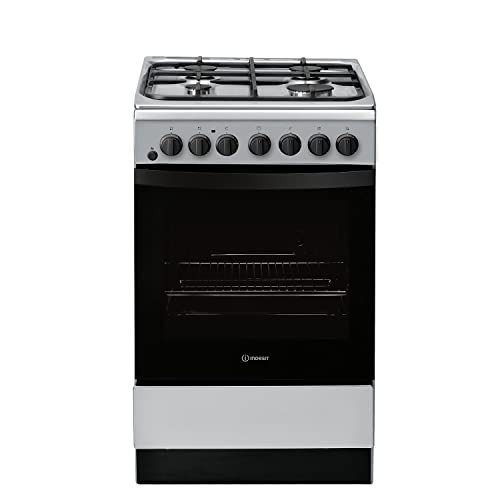The Complete Guide to Ovens and Hobs: Choosing the Right Appliances for Your Kitchen
When it concerns creating culinary work of arts, the importance of quality kitchen devices can not be overstated. Ovens and hobs are the heart of any kitchen, enabling home cooks and expert chefs alike to create, bake, and sauté scrumptious meals. Understanding the different kinds of ovens and hobs, together with their features and functionalities, is essential for making educated buying choices. This short article uses an extensive take a look at ovens and hobs, assisting you browse the choices offered so that you can enhance your kitchen's efficiency and adaptability.
Comprehending Ovens
Ovens are important for cooking and baking and can be found in various types to meet diverse culinary requirements. Here is an introduction of the most common kinds of ovens:
1. Conventional Ovens
Conventional ovens work by heating up the air inside with gas or electric components. They are ideal for baking cakes, roasting meats, and cooking casseroles.
2. Convection Ovens
These ovens use a fan to flow hot air, supplying an even temperature level throughout, which can considerably lower cooking times. They are perfect for baking cookies or roasting vegetables.
3. Microwave Ovens
Microwaves cook food rapidly utilizing electro-magnetic radiation. They are ideal for reheating leftovers or thawing frozen foods but are not suitable for browning or crisping.
4. Wall Ovens
Incorporating a wall oven into your kitchen design can conserve space and create a streamlined visual. They work similar to traditional or convection ovens but are built into the wall for simple access.
5. Variety Ovens
These ovens integrate stovetop burners with an oven, supplying versatility for those who prefer a single device for all cooking requirements.
| Type | Cooking Method | Best For |
|---|---|---|
| Traditional | Electric/Gas | Baking, roasting |
| Convection | Air flow | Quick cooking, even baking |
| Microwave | Electro-magnetic | Reheating, thawing |
| Wall Ovens | Electric/Gas | Space-saving, sleek design |
| Variety Ovens | Electric/Gas | Flexible cooking |
Checking out Hobs
Hobs, likewise called cooktops or stovetops, supply the surface area to prepare pans straight over a heat source. Like ovens, hobs are available in different types, which can be classified as follows:
1. Gas Hobs
These hobs utilize a flame for cooking and supply instant heat control. They are favored by many chefs for their responsiveness and precision.
2. Electric Hobs
Electric hobs use coils or flat surface areas to heat pans. They use a consistent heat source, but they might take longer to cool down compared to gas hobs.
3. Induction Hobs
Induction hobs use electromagnetic energy to heat pots and pans directly, making them highly effective and quicker to cook. They are also easier to clean as the surface stays fairly cool.
4. Solid Plate Hobs
These are older technology that uses solid metal plates to offer heat. They are durable however are less efficient than modern options.
| Type | Heat Source | Benefits | Downsides |
|---|---|---|---|
| Gas Hobs | Flame | Instant heat control | Requires gas connection |
| Electric Hobs | Electric coils | Constant heat | Slower to cool down |
| Induction Hobs | Electro-magnetic | Fast cooking, energy-efficient | Requires suitable cookware |
| Solid Plate Hobs | Strong metal plate | Durability | Less efficient |
Choosing the Right Appliances
Selecting the best oven and hob for your kitchen involves thinking about numerous elements:
1. Space and Layout
Procedure your kitchen area to determine the size and positioning of the oven and hob. Guarantee there is appropriate ventilation, specifically for gas appliances.
2. Cooking Style
Think about how often you cook and the kind of meals you prepare. A stove might match devoted bakers, while somebody who regularly stir-fries may choose an induction hob.
3. Energy Source
Select the energy source that best fits your way of life. Gas offers immediate control, while electric and induction hobs provide ease of use and are often more energy-efficient.
4. Budget
Recognize your spending plan for kitchen devices. Ovens and hobs differ substantially in rate, depending upon functions and brand names. Prioritize necessary functions that satisfy your needs.
5. Functions
Search for performances such as self-cleaning choices, clever technology compatibility, specific rack setups for ovens, and safety functions for hobs.
Frequently Asked Questions (FAQs)
Q1: What is the distinction in between a traditional oven and a convection oven?A1: Conventional ovens heat the air inside without fans, while convection ovens utilize a fan to circulate hot air for more even cooking. Q2: Can I use aluminum pots and pans on induction hobs?A2: No, induction hobs require ferrous (magnetic )products like cast iron or stainless-steel to work efficiently. Q3: Do gas hobs heat faster than electric hobs?A3: Yes, gas hobs offer instant heat, making them much faster for cooking compared to electric hobs. Oven And Hobs For Sale : Is it safe to use a microwave oven?A4: Yes, when utilized according to the producer's directions, microwave are considered safe for cooking.
Q5: How typically ought to I clean my oven and hob?A5: For optimum performance, clean your oven regularly, especially after spills. Hobs need to be cleaned down after each usage
to avoid buildup. Ovens and hobs
are vital components of a well-equipped kitchen. Comprehending the numerous types, their performances, and the considerations involved in acquiring
them can considerably improve cooking experiences. Whether one is a casual home cook or a professional chef, investing time in picking the ideal devices can lead to cooking success and complete satisfaction in the kitchen. By focusing on functions that line up with your cooking style, energy sources that fit your home, and budget plan considerations, you can create an efficient workspace that inspires culinary imagination.

